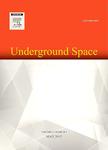Predicting the strut forces of the steel supporting structure of deep excavation considering various factors by machine learning methods
作者机构:Research Center of Coastal and Urban Geotechnical EngineeringZhejiang UniversityHangzhou 310058China
出 版 物:《Underground Space》 (地下空间(英文))
年 卷 期:2024年第18卷第5期
页 面:114-129页
核心收录:
学科分类:08[工学] 080502[工学-材料学] 0805[工学-材料科学与工程(可授工学、理学学位)]
基 金:supported by the National Natural Science Foundation of China(Grant No.51778575)
主 题:Deep excavation Steel supporting structure Strut forces Machine learning Time Temperature
摘 要:The application of steel strut force servo systems in deep excavation engineering is not widespread,and there is a notable scarcity of in-situ measured *** presents a significant research gap in the *** this,our study introduces a valuable dataset and application scenarios,serving as a reference point for future *** main objective of this study is to use machine learning(ML)methods for accurately predicting strut forces in steel supporting structures,a crucial aspect for the safety and stability of deep excavation *** employed five different ML methods:radial basis function neural network(RBFNN),back propagation neural network(BPNN),K-Nearest Neighbor(KNN),support vector machine(SVM),and random forest(RF),utilizing a dataset of 2208 measured *** points included one output parameter(strut forces)and seven input parameters(vertical position of strut,plane position of strut,time,temperature,unit weight,cohesion,and internal frictional angle).The effectiveness of these methods was assessed using root mean square error(RMSE),correlation coefficient(R),and mean absolute error(MAE).Our findings indicate that the BPNN method outperforms others,with RMSE,R,and MAE values of 72.1 kN,0.9931,and 57.4 kN,respectively,on the testing *** study underscores the potential of ML methods in precisely predicting strut forces in deep excavation engineering,contributing to enhanced safety measures and project planning.



